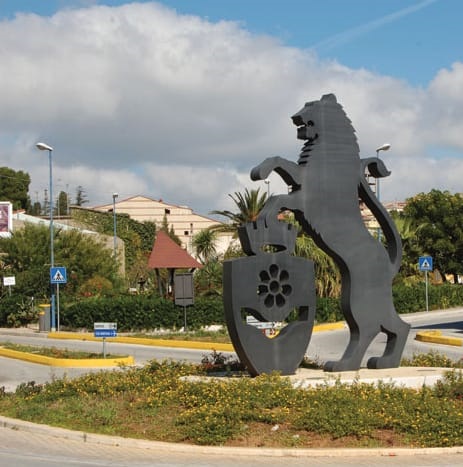Much has been written about the desperate state of Cassino in the fight for survival by the Germans against the incessant bombing by the Allies, about the Gustav line – and about the indominable spirit that has seen Cassino - like several other towns in Ciociaria – revive, if not survive, World War 2. One of the more memorable treatises by the Canadian, Mark Zuehlke, is entitled ‘The Liri Valley’.
Cassino was a small town whose role in life for many centuries was as a pastoral trading post – a point on the seasonal migration of the shepherds backwards and forwards from the seaside plains to the mountains of summer pastures. Cassino’s claim to fame had always been the grand Monte Cassino, the monastery of Benedict from 529 AD.
This spiritual seat of the Benedictine Order that was the source for monks establishing other monasteries, had been destroyed in 580 by the Langobards and reconstructed some 137 years later. War with the Saracens resulted in destruction in 883 AD with reconstruction starting about 70 years later but only being completed late in the 11th century.
It was a great basilica covered in artworks and grand architecture. In the ensuing years the Abbey became the saviour of the history of Europe as the monks transcribed the great texts of Greece, Rome and other civilisations of the ‘Dark Ages’. There were about 10,000 scrolls in the library. God intervened in 1349 with an earthquake that caused much damage, but the building was quickly returned to its state of ideality.
And then came the 1940’s. Italy was, since 1943, a ‘silent’ player in the war and a great historical site that was doomed for destruction as the Germans set up their defensive lines against the forecast Allied advance. But the plan of the Allies was to destroy the ‘playground’ of the war and to discourage the Germans from the fight. How did they plan to achieve this? With saturation bombing.
There were those among the Germans who could foresee this event and one in the middle of Cassino was Infantry General Fridolin von Senger und Etterlein, commander of the Cassino sector for the Germans. God shone on Monte Cassino by showing it to Fridolin – a devout Catholic and Rhodes Scholar who had earlier joined a lay Benedictine group. He devoted the efforts of his troops to removing the treasures of the monastery and sending them to the Vatican for safe-keeping.
The inevitable happened, and even though Monte Cassino was unoccupied by the German command, Allied bombers, on February 16, dumped over 400 tonnes of bombs onto the monastery, obliterating all but its defensive walls and killing at least 230 refugees sheltering in ‘one of Christendom’s most sacred shrines’. Even after artillery barrages for the following days, the grand old walls held, but all else – art and architecture -was destroyed.
Yet, as a signal of the permanence of Monte Cassino, just one year later a new foundation stone was set, and 19 years on the monastery was re-consecrated by Pope Paul VI and it stands today resurrected for the glory of God and mankind.
But what about Cassino, lying at the foot of the mountain? In 1944 it rained nearly incessantly from February until the Ides of March, a day not for relief, but a day that saw the complete destruction of Cassino. The statistics: 455 Allied bombers dumped over 1000 tonnes of bombs on the town and nearby villages in under four hours. Enough? No!
Immediately after cessation of bombing, 890 guns hammered Casino with 195,969 shells killing, wounding and entombing many. Even this did not threaten the remains of Monte Cassino which stood with the remaining German troops in its pile of rubble till the attack was called off, with the futile deaths of 881 New Zealanders and 1080 from the 4th Indian Division. This folly is now remembered as one of the great ‘military sins’.
And Cassino, unlike the abbey, it was not rebuilt on its ruins – it remains the most destroyed community in Italy. It was moved about 2 kilometres Few now were alive on March 15, 1944, when their town was destroyed. There is no more to say about the death of old Cassino, not even the rubble remains, just the freedom and excitement of a town, just about 60 years old, still in its architectural adolescence.








Follow us